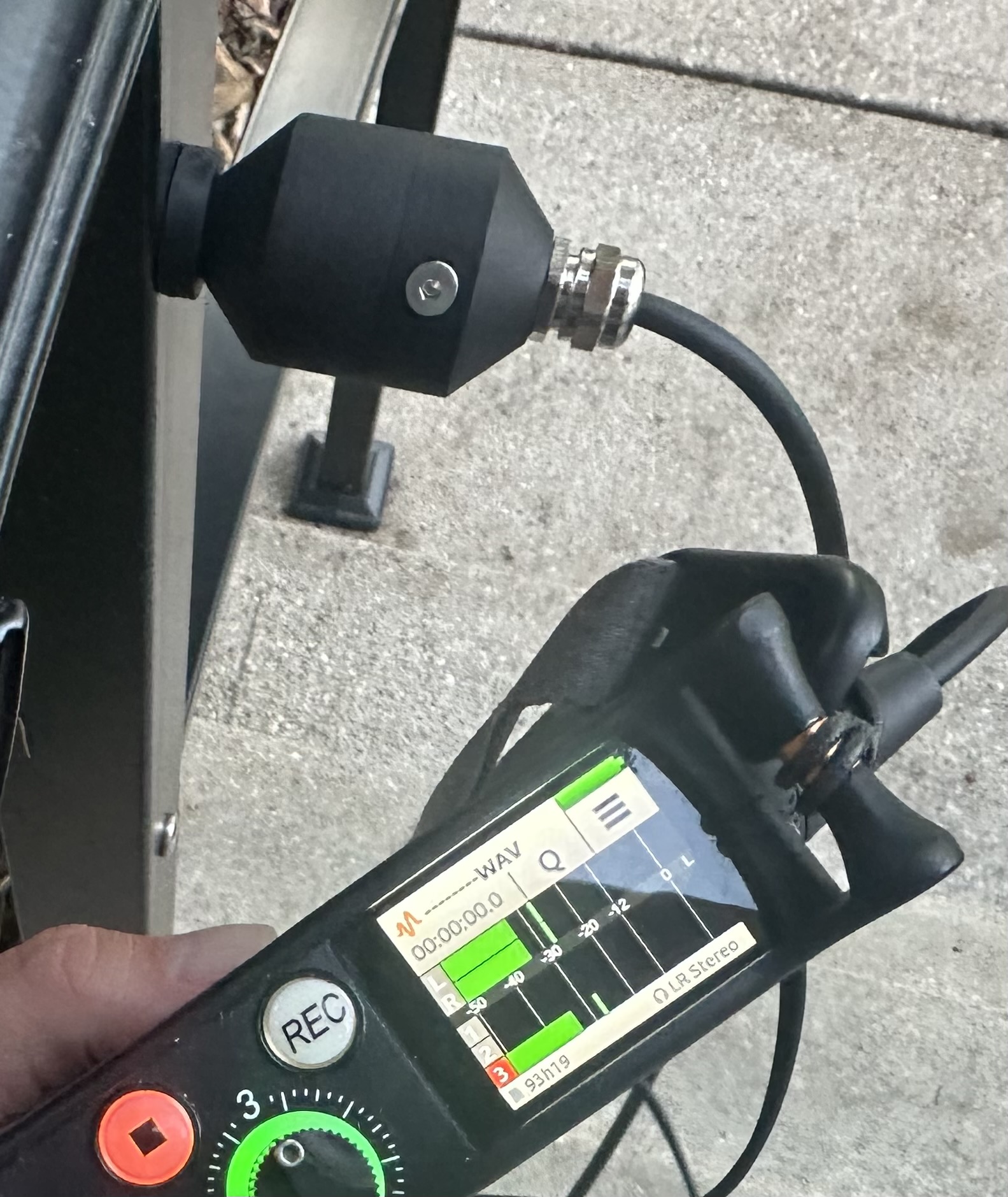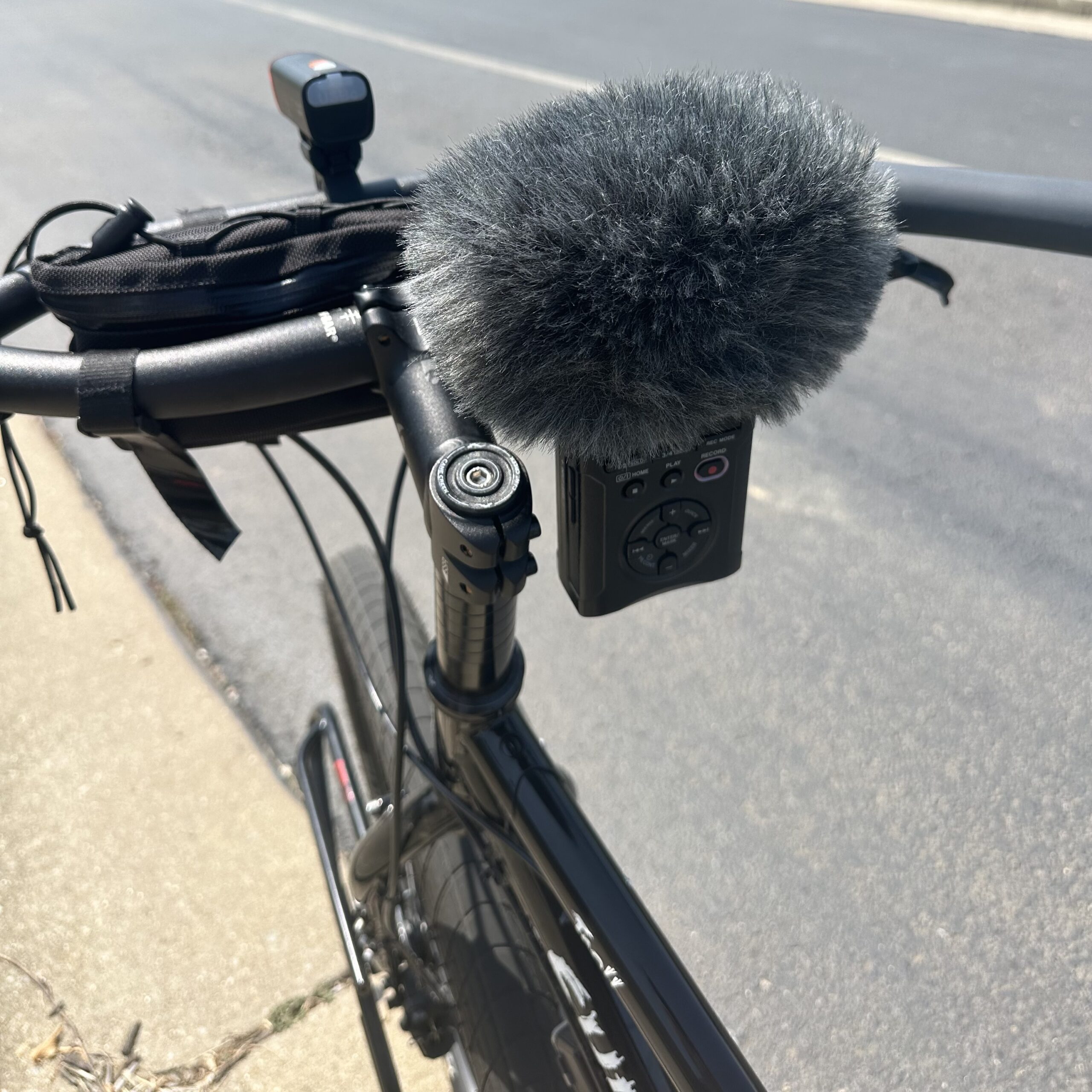Category: Field Recording
-
Is recording your life really that weird?
I mean audio recording. Like, when you’re playing a family game or walking a trail – having an audio recorder going. Or the chat you have with your kids in the car. Yes, I record those things. Not every time, but as often as I can manage. I’m known to have a recorder sitting out…
-
First thoughts – Sony ICD-UX570 Voice Recorder
I was going to buy the PCM-A10, but this popped up and it was less than half the money. So I checked on Soundcloud to see if there were any recordings. There were a few, and, frankly, they sounded pretty good for what this unit is. $80, has a built-in battery and a slide-out USB…
-
The shine comes off the Deity PR-2
So this morning as I was trying to figure out which day I’d made a recording on an went looking through the various directories of files I’d pulled off the Deity PR-2, I realized that the lack of dates in the file names it creates are a real problem. It’s not a unique problem, it’s…
-

Improving the Lom Geofon
A while back I got a LOM Geofon, which is a contact mic with a few attachments. It came as a kit and I got it assembled (really, just soldering a few connections) and it was fun to use. Except for the stiff, noisy cable. I replaced it with Mogami 2552, and I get less…
-
Deity PR-2 Review
I got a Deity PR-2 belt pack recorder, and so far it’s a keeper it’s revealed a fatal flaw. While I’m a hobbyist/general purpose audio guy I thought this could be a nice recorder form factor to have. Here are my thoughts: Like Dislike Living with it UPDATE: Unfortunately, after living with the unit for…
-
Why the DJI Mic 2 doesn’t work as a standalone purchase
Just got the DJI Mic 2 to use as an everyday recorder, but after a short trial I determined it doesn’t really work without a receiver, which cannot be bought separately. The unit records fine, and sounds ok. But the date & time cannot be set. The unit cannot be formatted. Can’t turn the low…
-

Recording decent audio while cycling
So I decided to try to figure out a way to record audio while riding a bike. And what I mean is, like, podcast style audio, not so much the sounds of the bicycle itself. I got to thinking about this watching YouTube videos by Tim Fitzwater and he’s got this great style where he…
-
Conservatory Ambience
My middle child had an audition at a music conservatory and as part of that was invited to a rehearsal of a quartet. I waited in the very reverbient lobby, but the quartet was audible so I recorded some of the session along with the lobby ambience. It was frustrating because they kept being stopped…
-
The case for handheld mics
Here’s why every field recording hobbiest should own a decent handheld dynamic omnidirectional interview mic: They’re inexpensive. A really good one might be $220 new if you go for the long-handled neodymium magnet high-output ones, but most are $100-160. For a mic that will outlast you. For comparison, an AT4022, a competent but mid-range condenser…
-
Shure VP88 Thoughts
On our recent road trip I wanted to bring a recorder, and the focus was going to be the family and audio journal entries. A handheld recorder would be the obvious choice, but there are some reasons to avoid them: I like using a reporter’s stick mic, but that isn’t stereo and often I like…